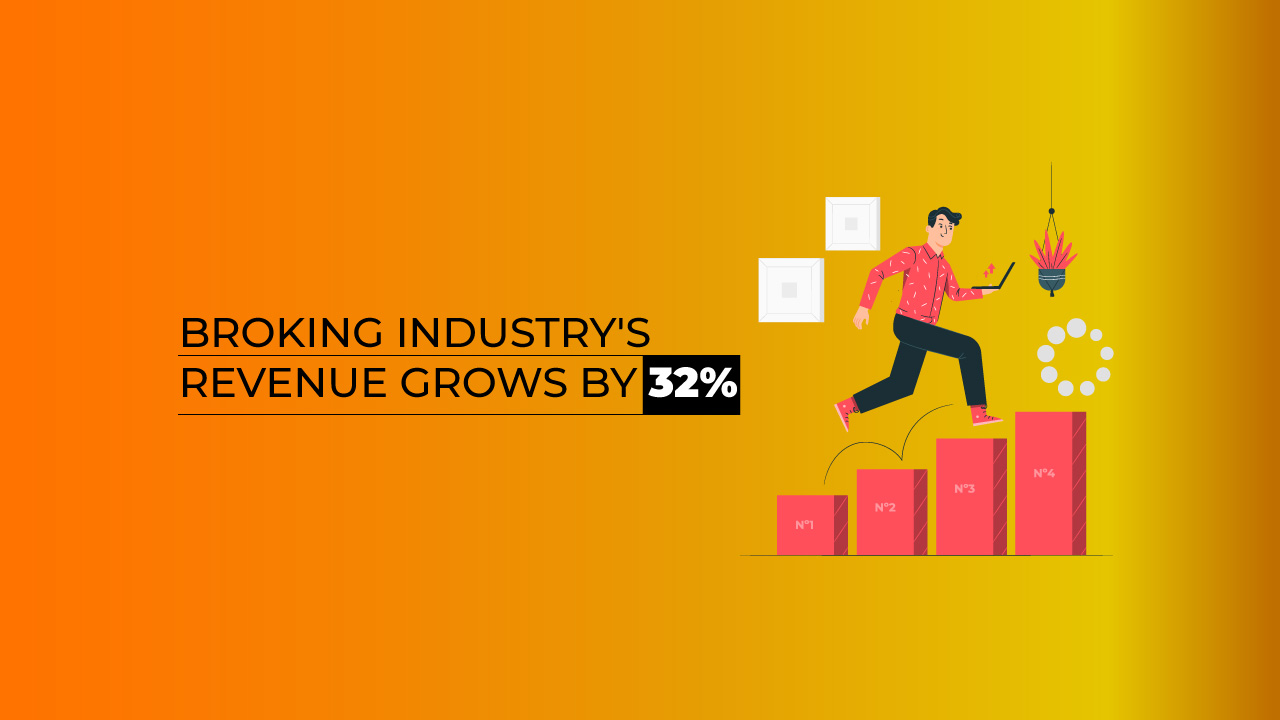Broking industry revenues to grow 32% in FY22

Last Updated: 9th August 2023 - 12:56 pm
In what could be music to the ears of the stock broking industry, a recent report by ICRA expects the revenues of the broking industry to grow by 32% in FY22 on the back of frenetic growth in number of accounts and average daily turnover.
ICRA expects FY22 revenues to touch Rs.28,000 crore, the highest in history. However, the growth in broking revenues is expected to moderate to around 5% in FY23, albeit on a much larger base.
ICRA has noted in its report that the transaction volumes reported sequential growth led by the futures & options segment. However, the growth in cash market turnover has been relatively subdued.
If the average daily turnover (ADTO) stood at Rs.28 trillion in FY21, it has grown 2.3 times to an ADTO level of Rs.63 million in FY22. This is more than four-fold rise over the ADTO levels of FY20.
According to ICRA, the favourable cues from the broking industry were an outcome of strong domestic and global liquidity, steady corporate earnings, revival in economic activity, solid internet penetration and an overall FOMO (fear of missing out) feeling by retail investors who seemed to have jumped on the stock market bandwagon. ICRA based these findings in a sample of 18 large brokerage houses.
The brokerage industry in India not only saw top line growth but even the profitability was positively impacted by trimmed cost structures and operational efficiency. Most brokers have focussed on acquisition of new customers through digital channels.
This has made the client acquisition process scalable and lower on the cost scale. At the same time, the larger brokerages have also scaled up their lending books, especially margin trading books.
Apparently, a lot of people are active in the market through the funding route. If you look at the aggregate capital market loan book of the 10 largest retail-oriented brokers, it has grown from Rs.4,591 crore in March 2020 to Rs.11,076 crore March 2021 and further to Rs.18,643 in September 2021.
The lending book comprises of margin funding products, loan against securities and employee stock ownership plan (ESOP) funding.
For the coming year, ICRA projects the broking customers to continue to patronize the capital markets business, although growth could moderate.
However, they remain sceptical of the lending business since higher bond yields post the rate hikes could make it tougher for the brokers to refinance their debt at reasonable cost. ICRA has also noted that the discount brokerage segment will continue to disrupt the broking industry overall.
Behind the growth in capital market volumes has been the frenetic growth in demat accounts. The number of active demat accounts grew from 4.08 crore in March 2020 to 5.51 crore in March 2021 and still further to 8.06 crore in December 2021.
If we look at where the growth in broking has gravitated; it has been all about large established entities with a strong presence in online broking. Market share consolidation will continue.
According to the ICRA report, most brokerages are now seriously looking to diversify their revenue streams and look for more annuity revenues rather than just transaction driven revenues.
However, the core broking business would still account for about 75% of the revenues in the medium term. As they say, the more things appear to change, the more they actually remain the same.
- Flat ₹20 Brokerage
- Next-gen Trading
- Advance Charting
- Actionable Ideas
Trending on 5paisa
Indian Stock Market Related Articles
Disclaimer: Investment in securities market are subject to market risks, read all the related documents carefully before investing. For detailed disclaimer please Click here.
 5paisa Research Team
5paisa Research Team
 Sachin Gupta
Sachin Gupta




